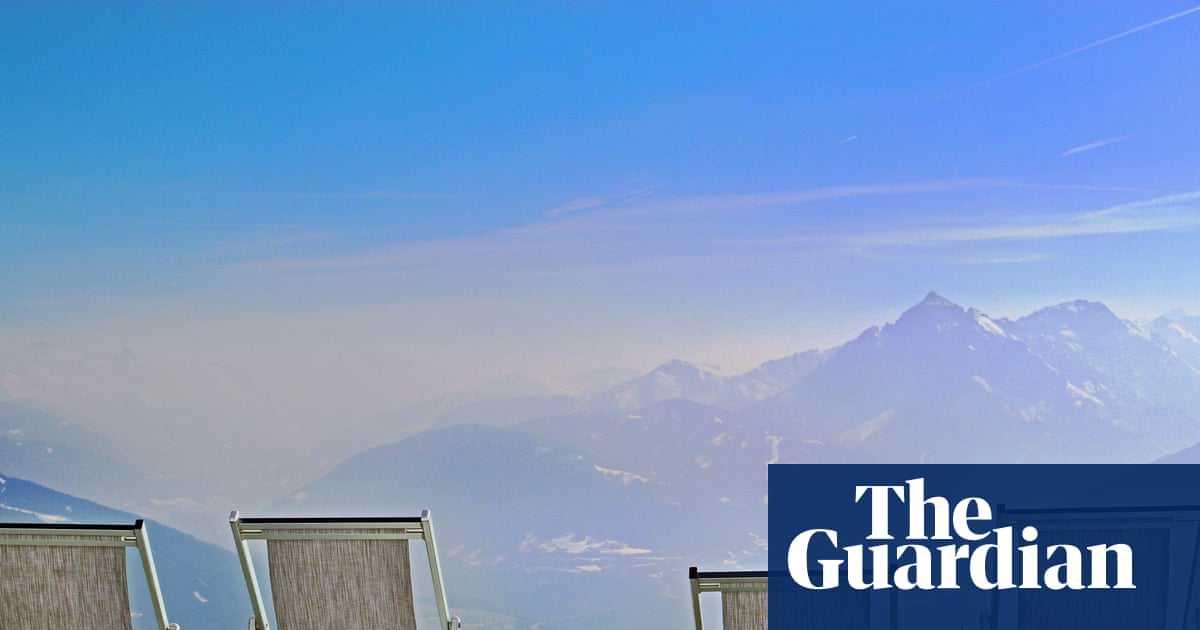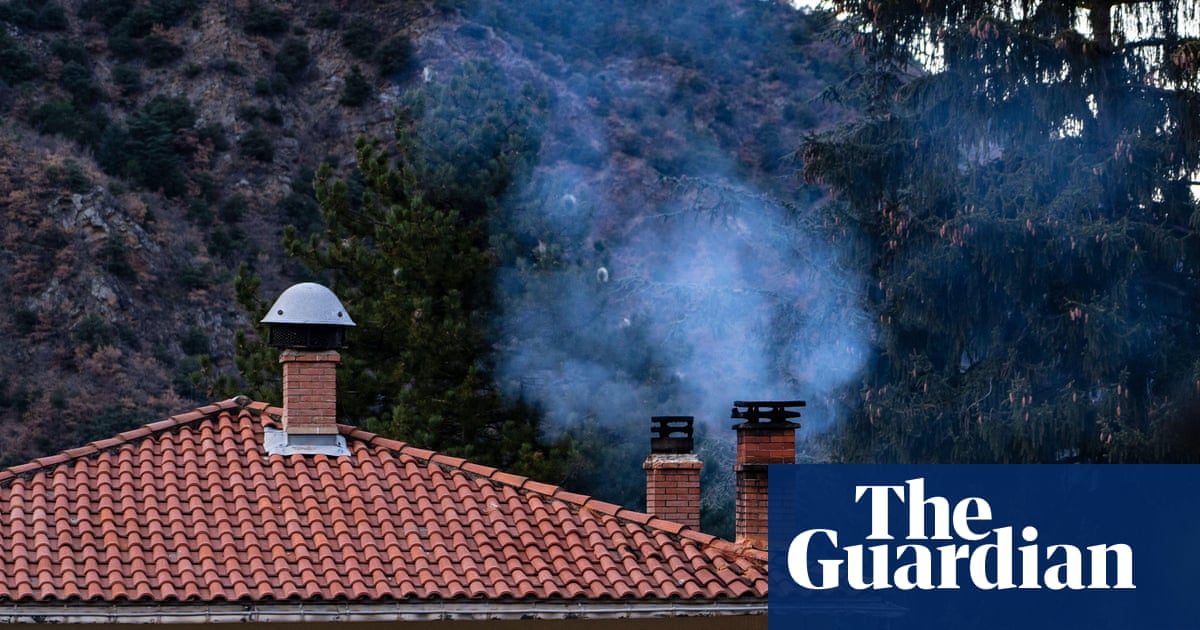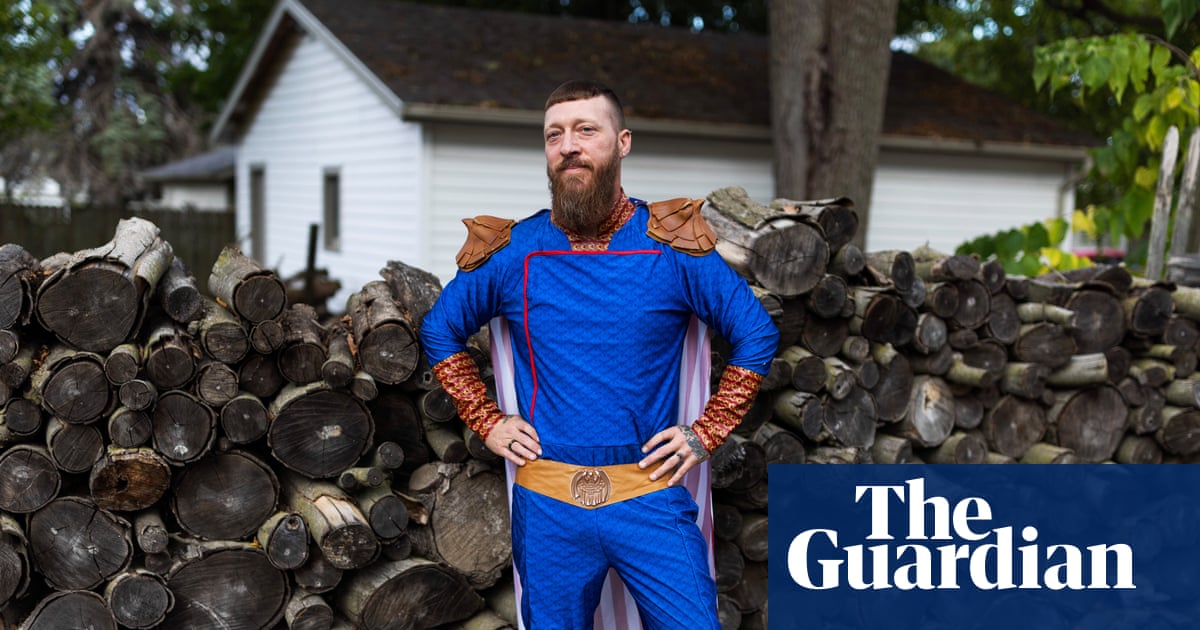Australian scientists have developed roof coatings that can passively cool surfaces up to 6C below ambient temperature, as well as extract water from the atmosphere, which they say could reduce indoor temperatures during extreme heat events.
Heatwaves are becoming more intense, more frequent and more deadly due to human-caused global heating.
One coating made from a porous film, which can be painted on to existing roofs, works by reflecting 96% of incoming solar radiation, rather than absorbing the sun’s energy. It also has a high thermal emittance, meaning it effectively dissipates heat to outer space when the sky is clear. Its properties are known as passive radiative cooling.
“The paint, even during the day when the sun is out, can be cooler than the air around it,” said the study’s lead author, Prof Chiara Neto of the University of Sydney.
The coolness of the painted surface also means that vapour from the atmosphere readily condenses on its surface – similar to dew forming overnight on a car.
“This material is able to extend the period over which dew can form by at least a couple of hours,” Neto said. “Instead of having dew forming only … say, four to six hours on a good night, you can extend that to eight or 10 hours.”
Sign up to get climate and environment editor Adam Morton’s Clear Air column as a free newsletter
In a study, published in the journal Advanced Functional Materials, the researchers tested a prototype for six months on the roof of the Sydney Nanoscience Hub, pairing the cool paint with a UV-resistant topcoat that encouraged dew droplets to roll down into a receptacle.
As much as 390 millilitres per sq metre per day could be collected for about a third of the year, the scientists found. Based on that water capture rate, an average Australian roof – about 200 sq metres – could provide up to 70 litres on days favourable for collecting dew, they estimate.
“It would complement existing provisions of water, whether that be the grid or rainwater,” Neto said, suggesting the system could be used in buildings in remote locations, or where there was little access to groundwater.
“The cooling aspect and the water go hand in hand when we talk about impact,” she said.
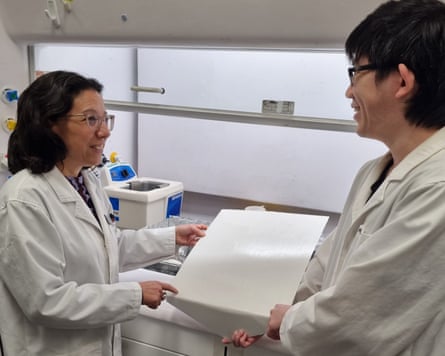
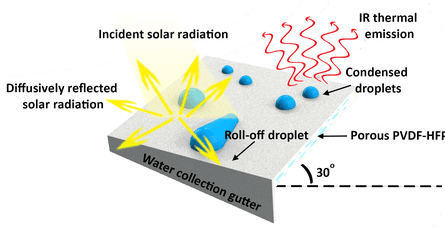
In well-insulated buildings, a 6C decrease in roof temperature “might result in a smaller fraction of that cooling being reflected in the top level of the house”, Neto said, but greater temperature reductions would be expected in most Australian houses, “where insulation is quite poor”.
She said the coating could also help reduce the urban heat island effect, in which hard surfaces absorb more heat than natural surfaces, resulting in urban centres being 1C to 13C warmer than rural areas.
after newsletter promotion
The prototype coating studied in the paper was comprised of poly(vinylidene fluoride-co-hexafluoropropene), which is used in the building industry but was “not a scalable technology going forward”, Neto said, because of environmental issues with perfluorinated materials.
However, the researchers are now commercialising a water-based paint with similar properties, which they say is suitable for wide use. Neto said the paint would cost about the same as standard premium paints.
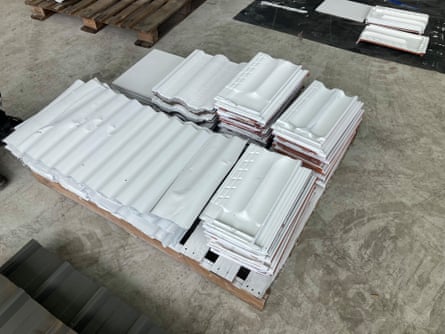
Sebastian Pfautsch, a professor of urban management and planning at Western Sydney University, who was not involved in the research, said cool coatings had been in development for a decade, but had not yet reached broad commercial release. “I expect that this will happen before 2030,” he said.
“The great application of these coatings is that you can retrofit [existing buildings].
“Three or four watering cans that you get for free from your roof – that’s fantastic as a principle,” Pfautsch said of the dew collection.
However, the real test would arise during times of water restriction, he said.
“Under drought conditions your relative humidity would also be very low,” resulting in less water being collected.

 8 hours ago
8
8 hours ago
8






